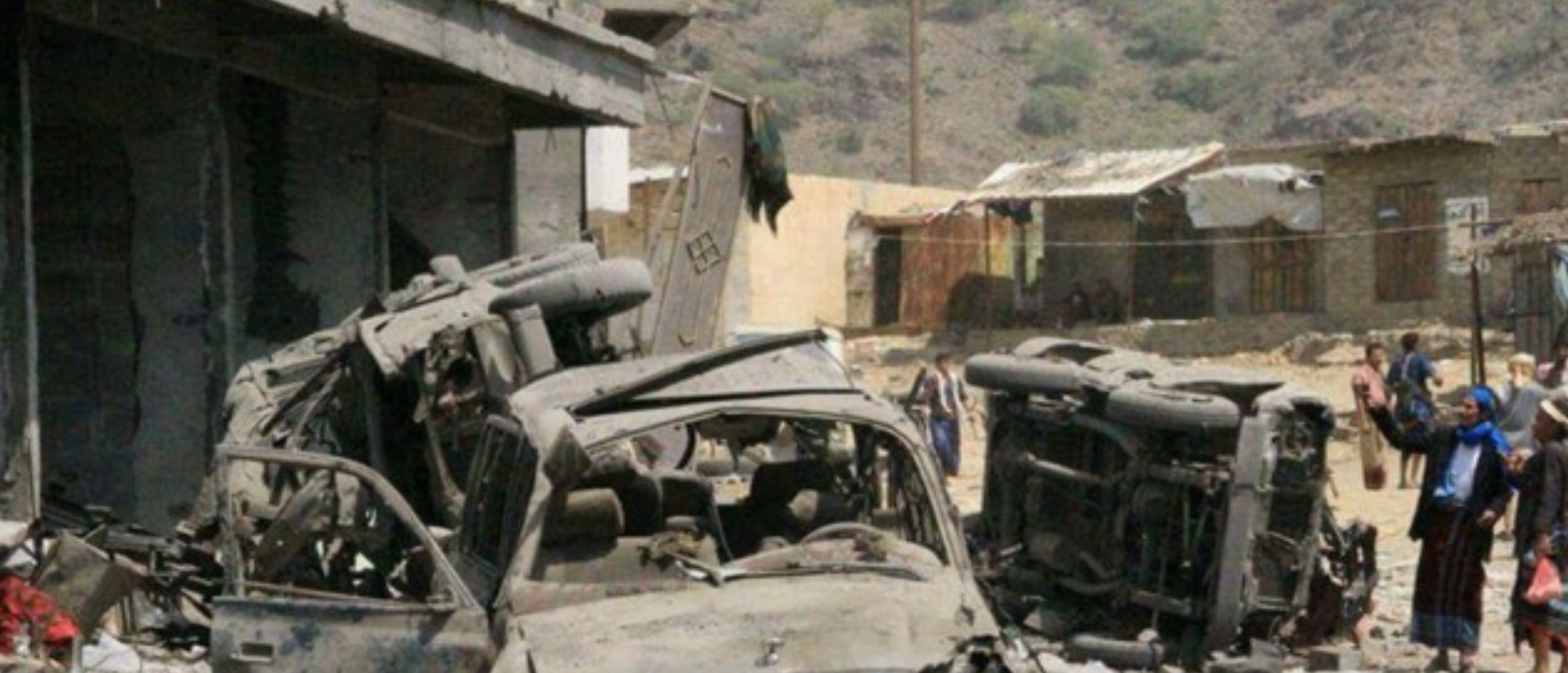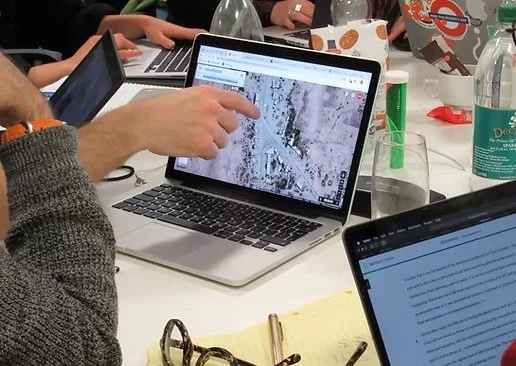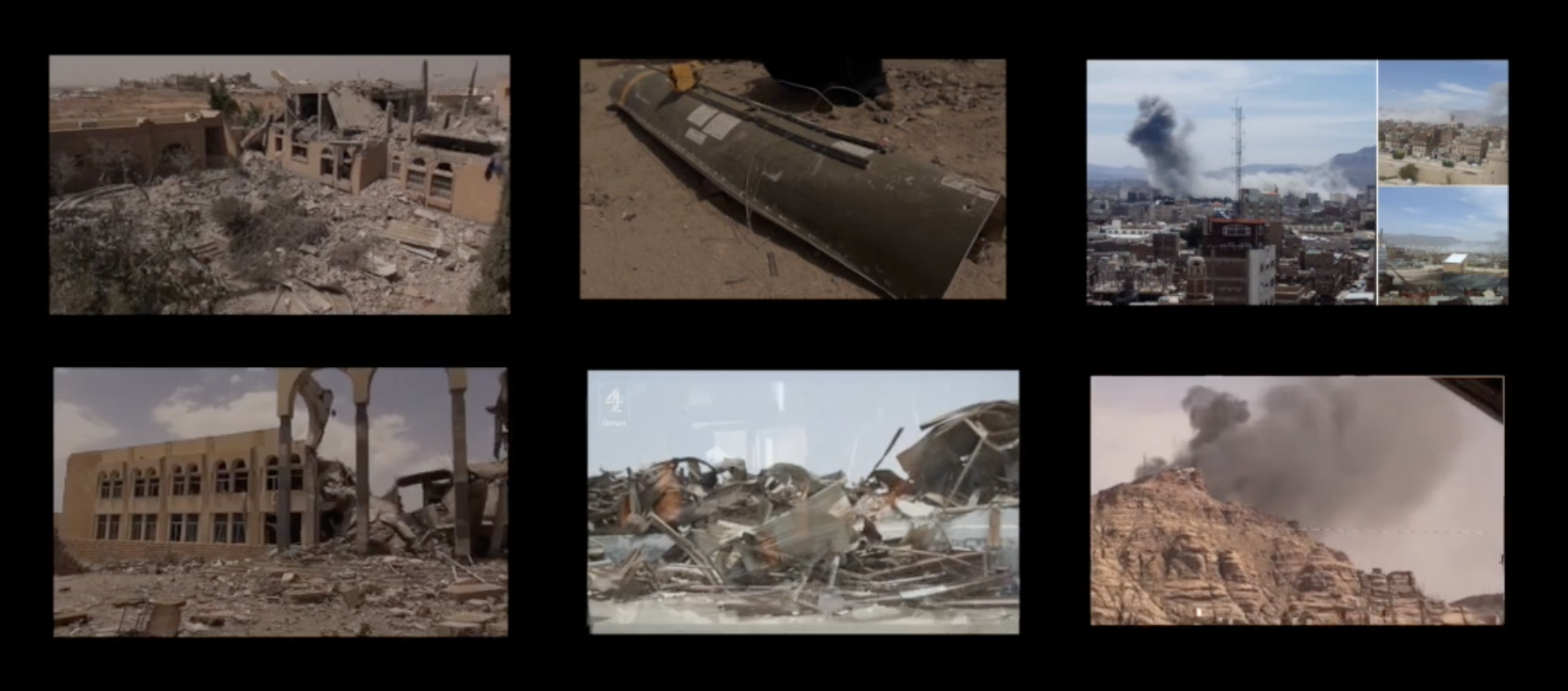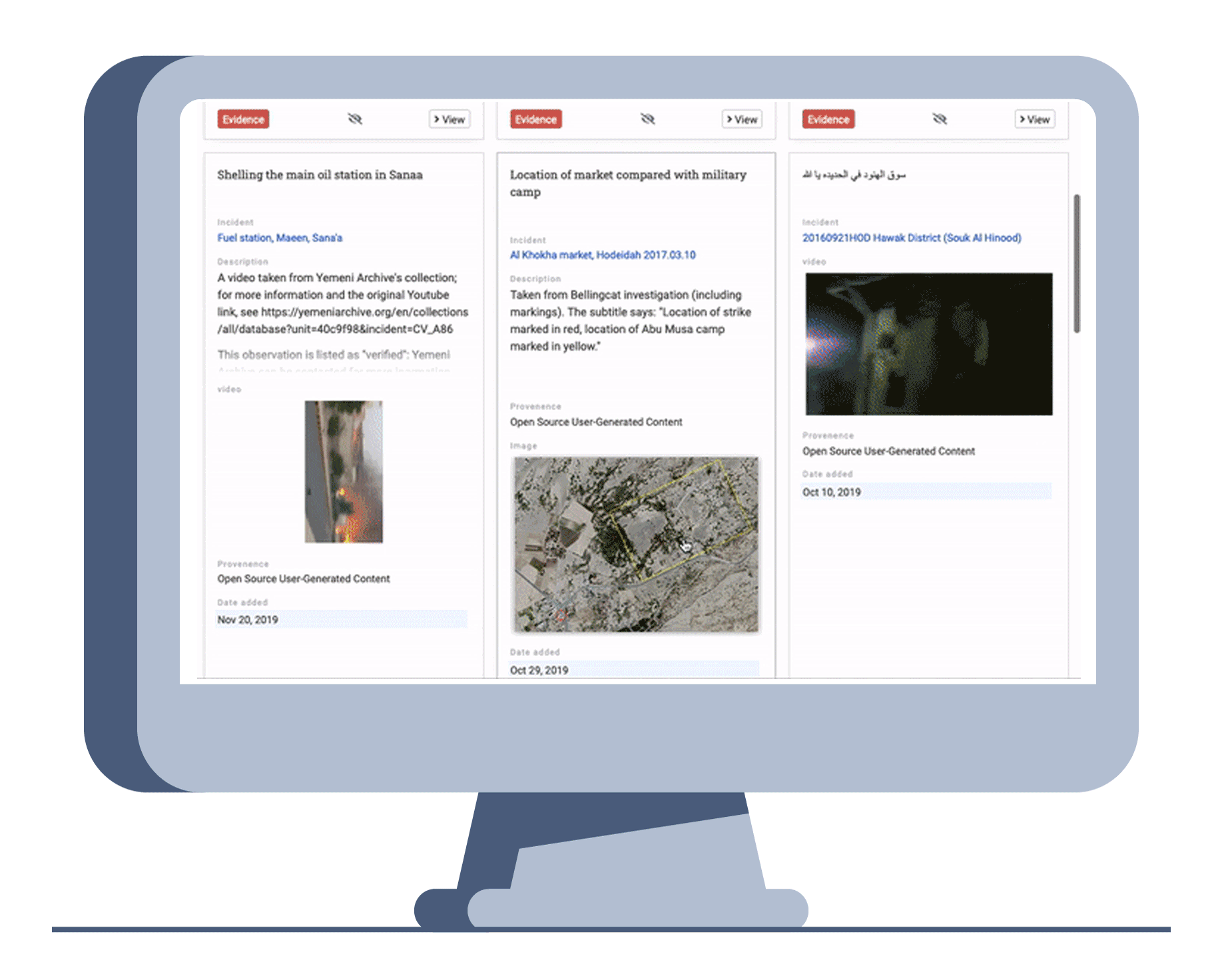Yemen
The Justice and Accountability Unit created a series of investigations and reports named The Yemen Project. Read on to learn more.
The Yemen Project
Background
Since March 2015, an intensive airstrike campaign by a Saudi/UAE-led coalition in Yemen has targeted markets, farms, family homes, civilian vehicles, civilian infrastructure, and objects indispensable to the survival of the civilian population.
The Coalition’s major weapons suppliers, which make these airstrikes possible, are located in the UK and the US. These companies transfer fighter jets and bombs under government licenses, but legal accountability efforts in third countries have sometimes been hampered by the quality and quantity of evidence demonstrating that these events are taking place. Seeking out evidence for accountability for alleged violations of international law forms a key part of GLAN's Yemen work, which focuses on the involvement of powerful European and American actors in these violations.
An expert workshop convened by GLAN in 2018 considered the potential for open-source intelligence (OSINT) to be used as evidence in legal proceedings. Discussions with expert participants from Amnesty International, the Human Rights Center at the University of California, Berkeley, Bellingcat, the Syrian Archive, and Forensic Architecture set in motion plans to harness OSINT as evidence of international law violations in Yemen.
A short video outlining the partnership between GLAN and Bellingcat to investigate war crimes in Yemen.
OSINT in the context of Yemen.
We heard from many Yemeni sources that getting reliable information is particularly difficult if independent NGOs or journalists cannot get timely access for on-the-ground investigations. Sometimes, a video or photograph posted on social media can give vital clues as to the location, cause, perpetrator, or effects of an attack, or can corroborate witness evidence. Occasionally, attacks themselves are even captured on video and posted online.
The nature of OSINT is such that little to nothing is known about the source and creation of the content, which can mean that it is presumed unreliable as evidence. GLAN has focused on what can and cannot be drawn from such audiovisual evidence in the context of showing events that may have violated international law. For example, a propaganda video showing a civilian building that has been “pancaked”, if its location can be verified, can be evidence that the building was hit by an airstrike, even if other information taken from the video cannot be relied on (e.g., supervised interviews with victims).
OSINT can be evidence of the lawfulness of attacks. If a passerby films civilian rescuers in an open area being hit by a second “double-tap” airstrike, this can, in conjunction with other information, serve as evidence that the attacker knowingly killed civilians. Likewise, if an investigator verifies through OSINT videos the exact location where a bomb landed in a crowded market, it can be combined with satellite imagery to infer that the attacker knew they would kill high numbers of civilians when the attack was launched.
Hackathon participants collating and verifying evidence across a number of controversial airstrikes while following a a methodology designed by GLAN
Developing a methodology
GLAN reviewed the principles of evidence in the UK and other jurisdictions and consulted with technology experts to produce a draft workflow for open source investigators. It was clear that such a methodology would need to strike a balance between being practical as well as robust.
To test and further refine the methodology, GLAN and Bellingcat co-hosted a “Hackathon” event in 2019 with the objective of investigating and publishing reports on alleged airstrikes in Yemen. Thanks to generous support from the Open Society Foundation, the New York Times, and Channel 4, the event brought together world-class open-source investigators, lawyers, and journalists. Investigators were able to simultaneously test GLAN's new, light-touch methodology. Evidence preservation was carried out by our partners at Mnemonic (Yemeni Archive, Syrian Archive).
Since this time GLAN and Bellingcat have continued to revise the OSINT methodology and during the completion of further investigations into attacks causing grave civilian harm. A revised version will be published in advance of the release of Bellingcat’s second round of investigations. In the meantime, the original methodology that was trialled at the Hackathon can be accessed here.
Hackathon participants collating and verifying evidence across a number of controversial airstrikes while following a methodology designed by GLAN
The Yemen Project methodology
Through years of collaboration, we have developed and tested a step-by-step methodology for investigators to follow, which will ensure that courts can put aside any scepticism and place appropriate trust in open source information. Its aim is to ensure that any material discovered by Bellingcat’s dedicated Justice and Accountability Unit is gathered in accordance with rules on admissibility of evidence so as to make it suitable for use in future legal proceedings and other accountability processes. It is the product of years of testing and development and has benefitted from input from legal and investigative practitioners, and the process can be adopted and used by investigators anywhere.
Note: The methodology used for the Yemen project preceded the one listed in our methodology section.
Findings and impact
Through the investigations that have been published so far, Bellingcat has identified a number of major contradictions between open-source evidence and the findings of the Saudi/UAE-led coalition's Joint Incident Assessment Team (JIAT).
OSINT investigations have identified and verified a significant number of videos that assist in the analysis of alleged breaches of international law. Much of the evidence uncovered has been entered into our evidence database, where it is combined with direct evidence (e.g., from witnesses), the Coalition statements, and NGO reports. This information will form an integral part of an upcoming legal action, details of which will be released during 2020.
Using evidence gathered using GLAN's methodology, Bellingcat made a submission to the UK's Committee on Arms Export Controls.
The OSINT investigations were also referenced in representations made by the legal team of the Campaign Against the Arms Trade in their letter sent to the UK Government’s Legal Department following a favourable decision from the UK's Court of Appeal.
Our material assisted in a New York Times investigation into airstrikes on medical facilities in Yemen.
The project with Bellingcat and Yemeni Archive is ongoing and can be scaled outwards to other projects and situations.
Investigations
The assessments reflect all of the available open source information at a given time to the investigator. Investigations are ongoing, and we actively seek to incorporate new information from all sources. If you have new information regarding an incident or if you think there is an error in our investigations, you can contact us via our contact form.
-

TAI20001 - Mawiyah Fuel Station Strike
January 5, 2020
On 24 May 2019, what appears to have been a fuel station of some kind struck in Taiz. There were claims of multiple civilian casualties, including children.
-

SAN10017 - The Office of the Presidency Strike
September 2, 2019
On 7 May 2018, a building in Sana'a was hit by two munitions. Although multiple reports claimed that the Presidential Palace had been hit, it in fact appears that this building was in fact the Office of the Presidency, a civil administrative building complex.
-

SAN20005 - Sana'a Raqqas Strike
September 3, 2019
On 16 May 2019, multiple airstrikes hit in and around Sana'a. One of these airstrikes appears to have hit a residential area in Al Raqqas immediately next to a school.
-

SAA10012 - The Manbah Market Strike
September 19, 2019
On 19 September 2015, an airstrike hit what appeared to have been a commercial area in a village in Manbah.
GLAN Airstrike Database
Since 2018, GLAN has been developing a repository of digital evidence on the Saudi/UAE-led bombing campaign in Yemen, where violations of international law appear to have occurred. This resource seeks to address both the lack of coordination in evidence gathering and also bring together in a single workflow user-generated digital information with evidence from private individuals (e.g., journalists, witnesses) and NGOs. Our goal is to support or make possible future legal accountability efforts for these attacks by preserving information in accordance with the highest legal standards.
Learn more about the Yemen Airstrike Database →
Get in touch
If you are involved in the prosecution or defence of atrocity crimes in Yemen and want to learn more or contribute to our work, please contact us.







